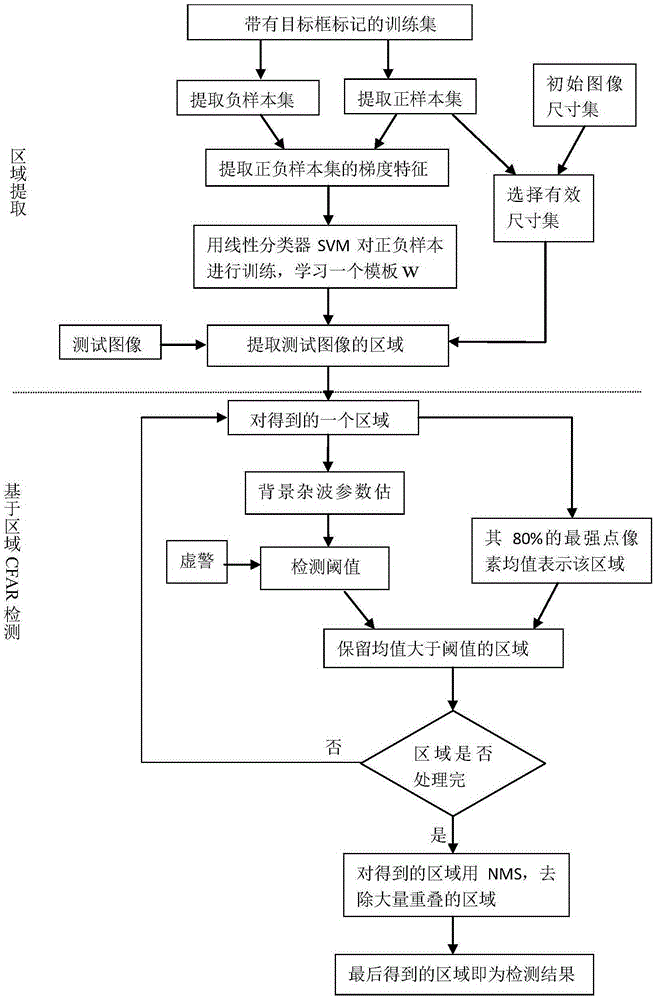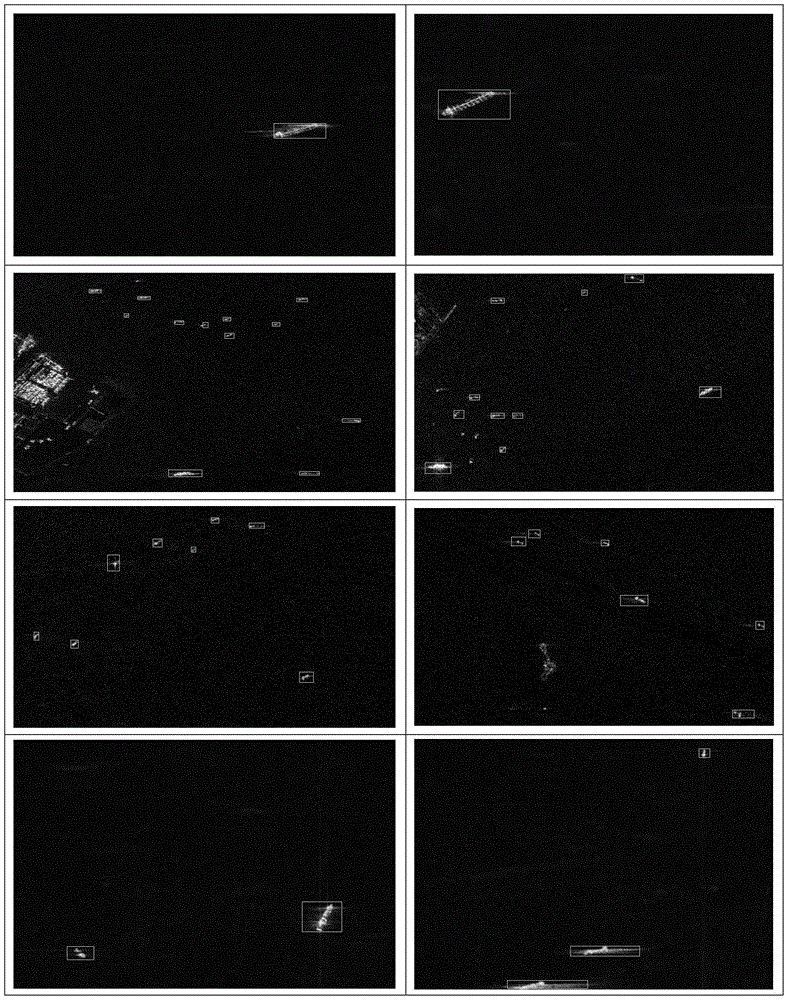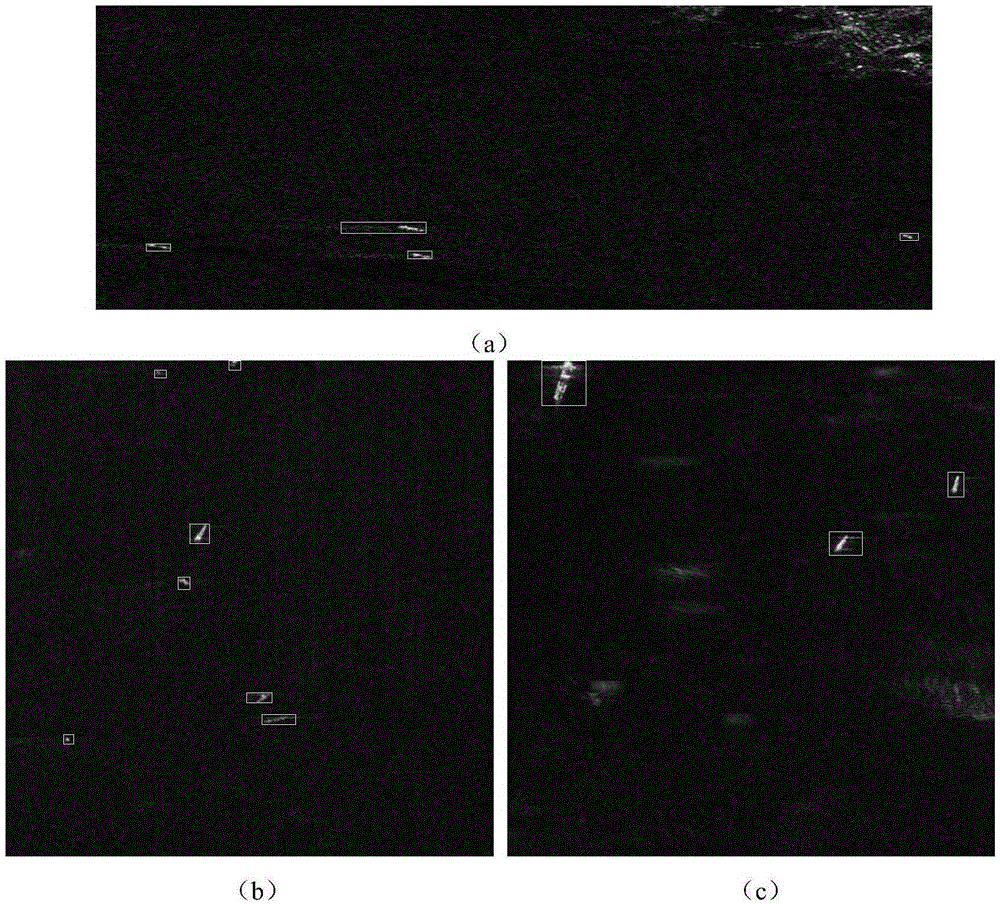Region extraction-based two-parameter constant false alarm detection method
A constant false alarm detection and area extraction technology, applied in the field of constant false alarm detection, can solve the problems of target missed detection, long detection time, difficult follow-up processing, etc., and achieve the effects of improving detection accuracy, speeding up calculation speed, and speeding up detection speed
- Summary
- Abstract
- Description
- Claims
- Application Information
AI Technical Summary
Problems solved by technology
Method used
Image
Examples
Embodiment Construction
[0031] refer to figure 1 , the implementation steps of the present invention are as follows:
[0032] Step 1, extract positive and negative sample sets from the labeled training set.
[0033] (1.1) Input training set:
[0034] Suppose the training set Tr={(I 1 ,B 1 ),...(I j,B j )...,(I m ,B m )},
[0035] Among them, m is the number of training data, I j is the jth training image in the training set,
[0036] B j ={b 1 j ,...b k j ...,b tj j} is the target frame set of the marked target in the jth training image,
[0037] tj is the number of targets in the jth image;
[0038] b k j =(l,t,r,b) is the target frame of the k-th labeled target in the j-th training image, where l represents the abscissa of the upper left point of the target frame, t represents the vertical coordinate of the upper left point of the target frame, and r represents The abscissa of the lower right point of the target frame, b represents the vertical coordinate of the lower right poi...
PUM
 Login to View More
Login to View More Abstract
Description
Claims
Application Information
 Login to View More
Login to View More - R&D
- Intellectual Property
- Life Sciences
- Materials
- Tech Scout
- Unparalleled Data Quality
- Higher Quality Content
- 60% Fewer Hallucinations
Browse by: Latest US Patents, China's latest patents, Technical Efficacy Thesaurus, Application Domain, Technology Topic, Popular Technical Reports.
© 2025 PatSnap. All rights reserved.Legal|Privacy policy|Modern Slavery Act Transparency Statement|Sitemap|About US| Contact US: help@patsnap.com



